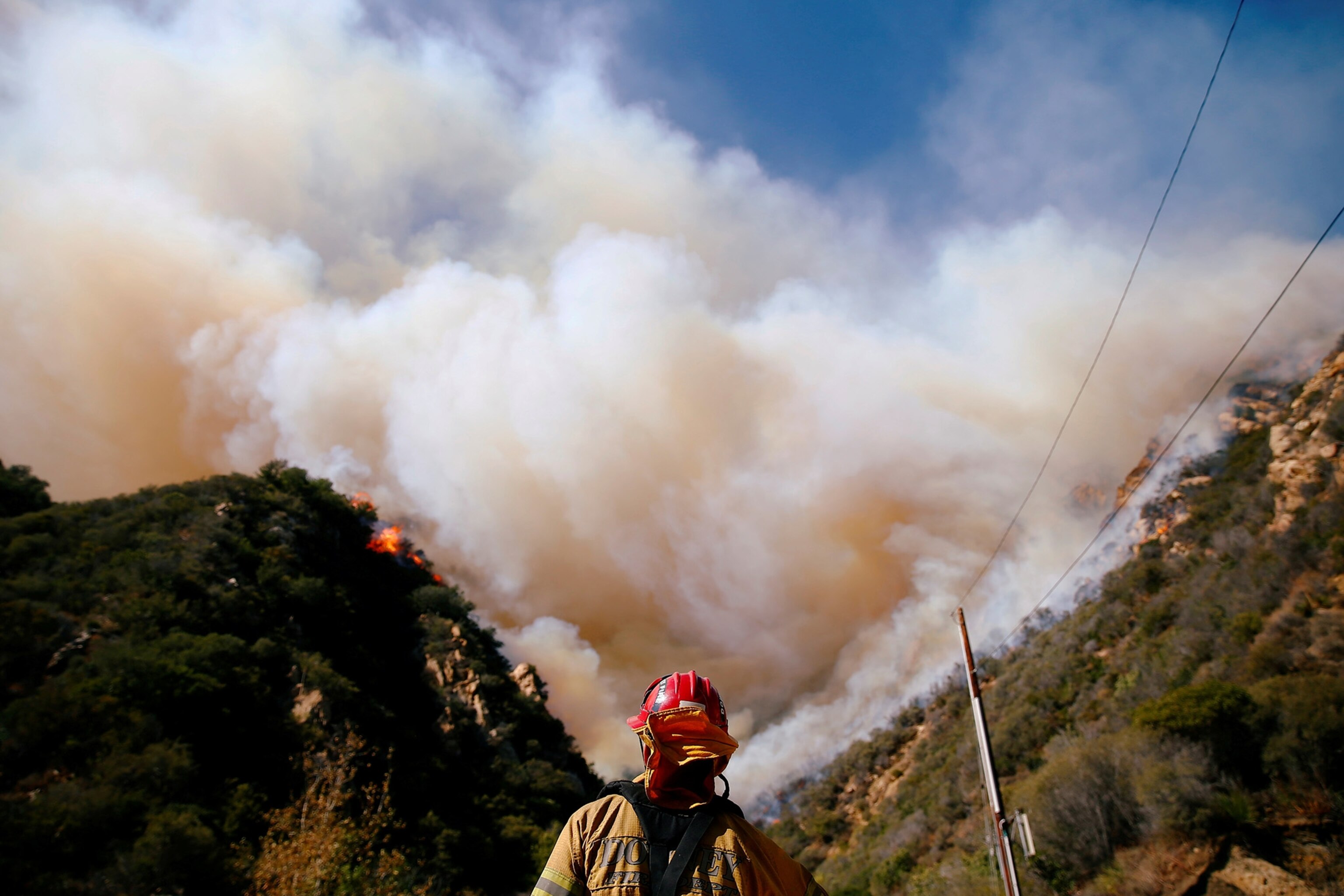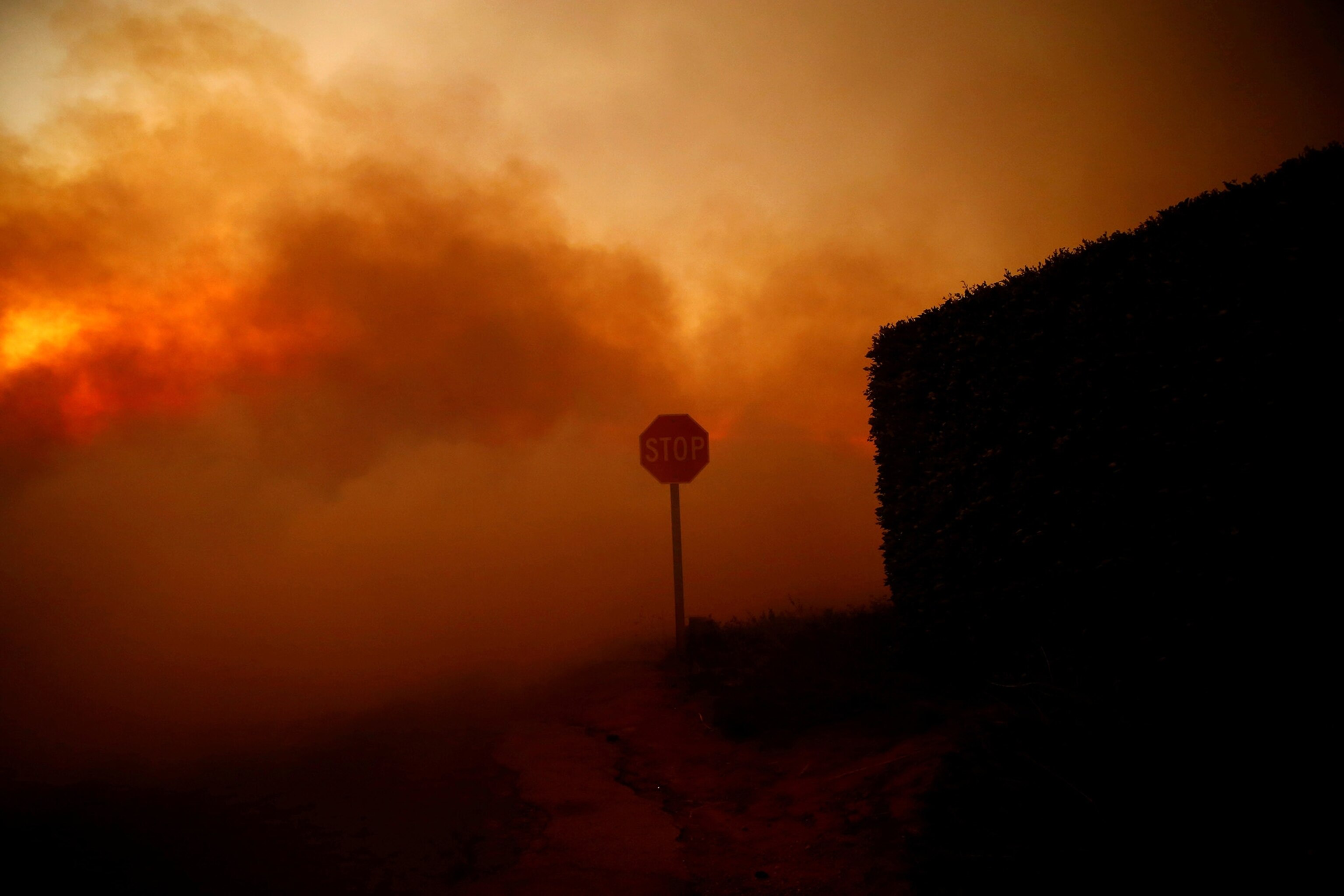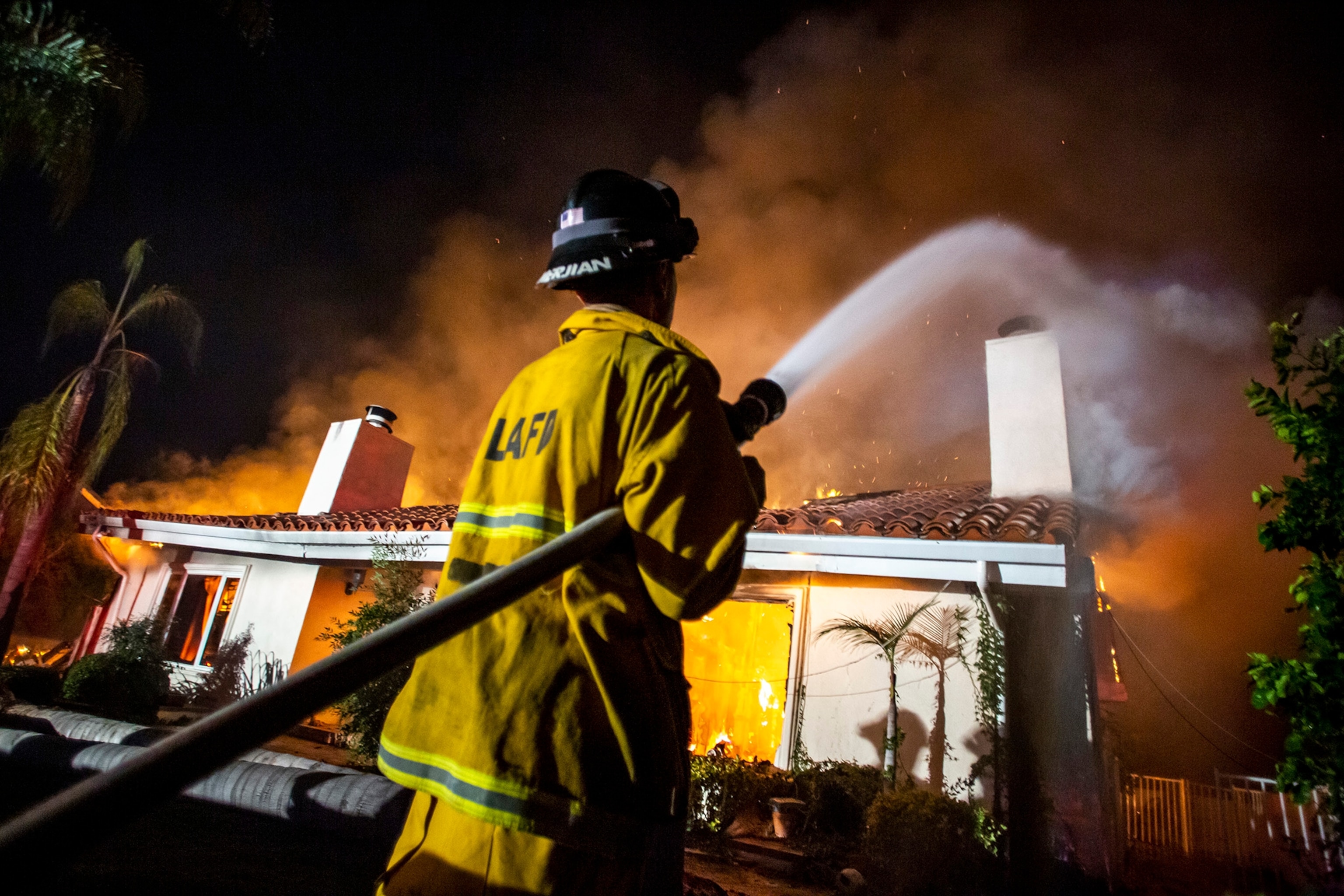
What mass die-off of an iconic tree says about changing climate
A new book reports from the frontlines of a world in transition, and explores our ability to cope.
Ice melting, seas rising, longer droughts—in a world seemingly on fire, I chose to put myself in some of the worst of it.
The Alexander Archipelago in Southeast Alaska is a collection of thousands of islands in one of the scarce pockets remaining on this planet where thick moss blankets the forest floor and trees range from tiny seedlings to ancient giants. But I wasn’t loading into that Cessna four-seater to look for fairy-tale forests of spruce, hemlock, and cedar. I was flying in search of mass graveyards of standing dead trees and the plants I so wanted to believe could tell me, through science, that maybe the world is not coming to an end through warming. Eventually, those dying trees would give me a sense of conviction about our ability to cope with climate change.
I tightened the seatbelt, tugged the straps on my orange lifejacket, and slipped the headphones over my ears. Avery, our pilot, flipped a few switches, and then the audio crackled into static.
“Let’s check the sound,” he said.
“Pretty clear,” Paul reported from the copilot seat. “I can hear you.”
“Got you both,” Ashley confirmed to my left.
“Good to go,” I said, swinging my camera off to one side so I could see the laminated maps on my lap.
I was five days away from spending the summer measuring dead and dying trees on the remote outer coast, where winds whip and whirl and ocean swells slam against the rocky shores. We were flying for science and flying for field logistics; I needed to finalize the practical stuff before it was really go time. The flight was supposed to confirm my sampling strategy for the forests with the two far more senior researchers present—Paul Hennon, a forest pathologist, and Ashley Steel, a statistician, both with the United States Forest Service.
The species is Callitropsis nootkatensis. Some people call it the Alaska cedar. Others call it the yellow cypress, or the Nootka cypress, named after Nootka Sound along Vancouver Island, where it was first botanically documented. Alaskans use the name yellow-cedar. What mattered to me was that these trees are long-lived, and that, though they are coveted for their golden wood, and culturally revered for their majestic and mysterious ways, they are dying in our warming world.
“Get ready to soak it in,” Ashley said as the floats lifted from the water. She wiggled her knees in anticipation. The plane swooped around to head west, and I watched the bright blue glacier outside Juneau shrink into the distant landscape.
“Think stratified random sample,” Ashley said, snapping me back to scientific protocols.
Two years into graduate school, I was finally accustomed to translating science. Patches, I thought, simplifying things. We’re looking for the large patches of dead trees.
I waited patiently and scanned the passing coastline for the cypress. Despite how much I had prepared, I really had no idea what I was getting myself into—scientifically, physically, or emotionally.

In the maps I held, I’d traced black lines around the dead trees from various datasets. The plan was to fly over them. I’d confirm they were there in reality (and not just in pixels), dead by the telltale signs—brown foliage and leafless branches, limbs lost to decay. Then eventually I’d reach a subset of them by foot and kayak with my crew to measure the dead and dying and whatever we found still green.
We had about thirty minutes until the plane reached Chichagof Island—the place where I really needed to pay attention. Testing my skills, I followed our flight path on the pilot’s screen, trying to match our location with the maps on my lap and then verify with the view below. Pretty soon I was totally lost, unable to reorient from the screen, the maps, or the view, and feeling nauseous.
I reached up and opened the small vent beside the window, angling the air toward me. Ashley’s face looked pale.
“How ya feeling back there?” Avery asked through the audio crackle.
“Like vomiting,” Ashley reported. “And I don’t see any patches yet.”
I closed my eyes and breathed deeply to calm the queasiness. When I finally opened them again, I didn’t need to look at the maps or the screen to know where we were.
“Whooaaaaaaa,” I exclaimed into the headset. We were flying across a long, narrow artery of salt water running into the forested land. “Peril Strait,” I said.
“We’re in the heart of it now,” Paul declared. He sounded almost proud.
To the left, the verdant coastline broke off into inlets and side channels.
To my right, I could see the steep hillsides covered in white skeletons of dead trees—standing on end like telephone poles, leafless ghosts of the towering cypress. Boulder-sized rocks on the beaches looked like little specks in relation to the large tracks of terrain with dying trees, the canopies of foliage in faded sepia tone.
From the bird’s-eye view, the giant trunks looked like thousands of toothpicks stuck in the earth. If trees were people, anyone would have called it a tragedy—an epidemic running rampant throughout the community in the largest remaining coastal temperate rainforest on Earth. I felt the tiny hairs on my forearms rise.
“Let’s get a little more perspective,” Paul said. Avery took us higher, enabling us to see farther inland.
The plan of picking random patches from the grid of latitudes and longitudes on my lap—a strategy that had seemed both feasible and logical back at the office—would never work. Even if I could manage to land my kayak at the closest beach, some of those forests—far from roads or even trails—would take days to reach. I simply didn’t have that kind of time. Similarly, the idea of classifying patches of dead trees into categories of stressed trees, recently dead trees, or long-dead trees was ridiculous. No way could we get that level of detail from our aerial perspective.
Developing a new sampling plan at the last minute was potentially a huge setback, but I should have been more worried than I was. Instead, I was distracted by a knot, deep inside my stomach. It was that kind of terrible feeling that surfaces when you drive past a wreck on the highway and the ambulances aren’t racing anyone off to the hospital. You wonder who died, who’s gone forever, what loves or lives are cracked. And then you drive on, because that’s all you can do.
Except for me, for this, there was no driving on from the graveyards of standing dead, no going home, and no forgetting. I didn’t know it then, but those trees would change my life. In the moment, soaring above them, they made me feel vulnerable to our warming world in a way I had never felt before.
There’s a limit to the change we can tolerate, I thought. There’s a threshold and tipping point for every species—humans included.
I looked at the screen to confirm that the inlet before us was the one where I’d spend the summer: Slocum Arm.
Avery dropped down a bit closer. Even from the plane, the stark landscape felt eerie, as if the dead trees were signposts for an even greater tragedy to come.
Before I ever set foot in the forests of Slocum Arm, so much had already gone wrong. But gazing down at the graveyards, I found myself thinking, I’m not backing away from this.
“There’s a way,” Paul said. “Just not the one we thought.”
I agreed with Paul—I’d find another way to stratify the forests on the ground. I’d guided clients down white-water rivers, built trails in the Rocky Mountains, and backpacked alone in snowy winters. I wasn’t afraid of the rain or the grizzlies (too much), and I trusted I could resolve whatever scientific challenges arose with my team. How I’d stratify the forests was only the first of many problems we would have to solve in the years to come. I’d find my way through the obstacles to understand the impacts of these dying trees on the surrounding communities of plants and people, to uncover whether this species was the canary in the coal mine—calling out for our own inevitable demise.
What I didn’t know then was that these dead trees would eventually give me more than just hope. They’d give me a sense of conviction about our ability to cope with climate change. They’d motivate me to do my part. They’d move me from pessimism about the outlook of our world to optimism about all we still can do.
As we made our way back down Slocum Arm, I stopped focusing on the dead trees and started looking around them. I could see green peeking up and around the barren trunks. I wondered if there was a new forest forming and what individuals could survive amidst the changes occurring.
Related Topics
You May Also Like
Go Further
Animals
- Fireflies are nature’s light show at this West Virginia state parkFireflies are nature’s light show at this West Virginia state park
- These are the weird reasons octopuses change shape and colorThese are the weird reasons octopuses change shape and color
- Why young scientists want you to care about 'scary' speciesWhy young scientists want you to care about 'scary' species
- What rising temperatures in the Gulf of Maine mean for wildlifeWhat rising temperatures in the Gulf of Maine mean for wildlife
- He’s called ‘omacha,’ a dolphin that transforms into a man. Why?He’s called ‘omacha,’ a dolphin that transforms into a man. Why?
Environment
- What rising temperatures in the Gulf of Maine mean for wildlifeWhat rising temperatures in the Gulf of Maine mean for wildlife
- He’s called ‘omacha,’ a dolphin that transforms into a man. Why?He’s called ‘omacha,’ a dolphin that transforms into a man. Why?
- The northernmost flower living at the top of the worldThe northernmost flower living at the top of the world
- This beautiful floating flower is wreaking havoc on NigeriaThis beautiful floating flower is wreaking havoc on Nigeria
- What the Aral Sea might teach us about life after disasterWhat the Aral Sea might teach us about life after disaster
History & Culture
- Scientists find evidence of ancient waterway beside Egypt’s pyramidsScientists find evidence of ancient waterway beside Egypt’s pyramids
- This thriving society vanished into thin air. What happened?This thriving society vanished into thin air. What happened?
Science
- Why pickleball is so good for your body and your mindWhy pickleball is so good for your body and your mind
- Extreme heat can be deadly – here’s how to know if you’re at riskExtreme heat can be deadly – here’s how to know if you’re at risk
- Why dopamine drives you to do hard things—even without a rewardWhy dopamine drives you to do hard things—even without a reward
- What will astronauts use to drive across the Moon?What will astronauts use to drive across the Moon?
- Oral contraceptives may help lower the risk of sports injuriesOral contraceptives may help lower the risk of sports injuries
- How stressed are you? Answer these 10 questions to find out.
- Science
How stressed are you? Answer these 10 questions to find out.
Travel
- The best long-distance Alpine hike you've never heard ofThe best long-distance Alpine hike you've never heard of
- Fireflies are nature’s light show at this West Virginia state parkFireflies are nature’s light show at this West Virginia state park
- How to explore the highlights of Italy's dazzling Lake ComoHow to explore the highlights of Italy's dazzling Lake Como
- Going on a cruise? Here’s how to stay healthy onboardGoing on a cruise? Here’s how to stay healthy onboard
























